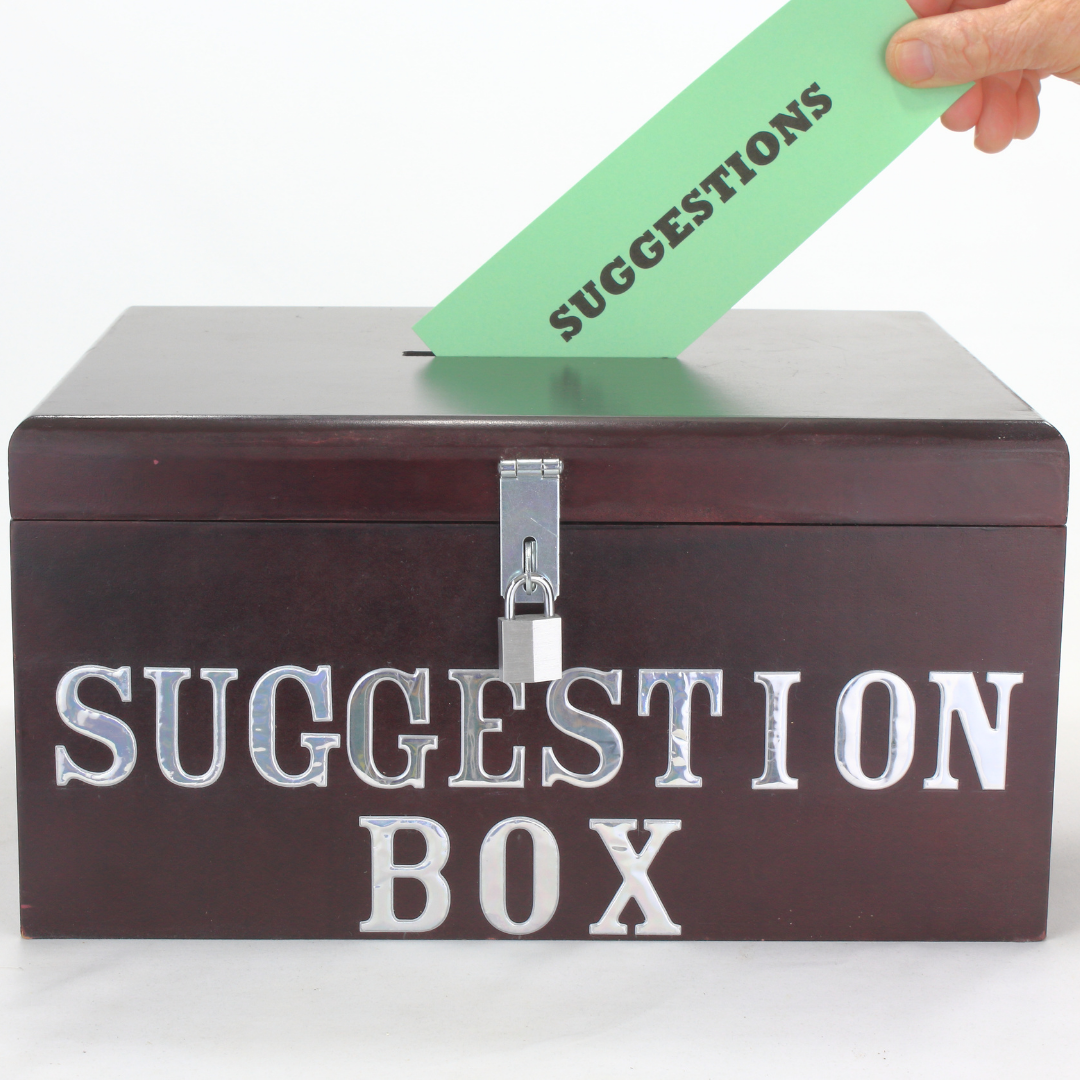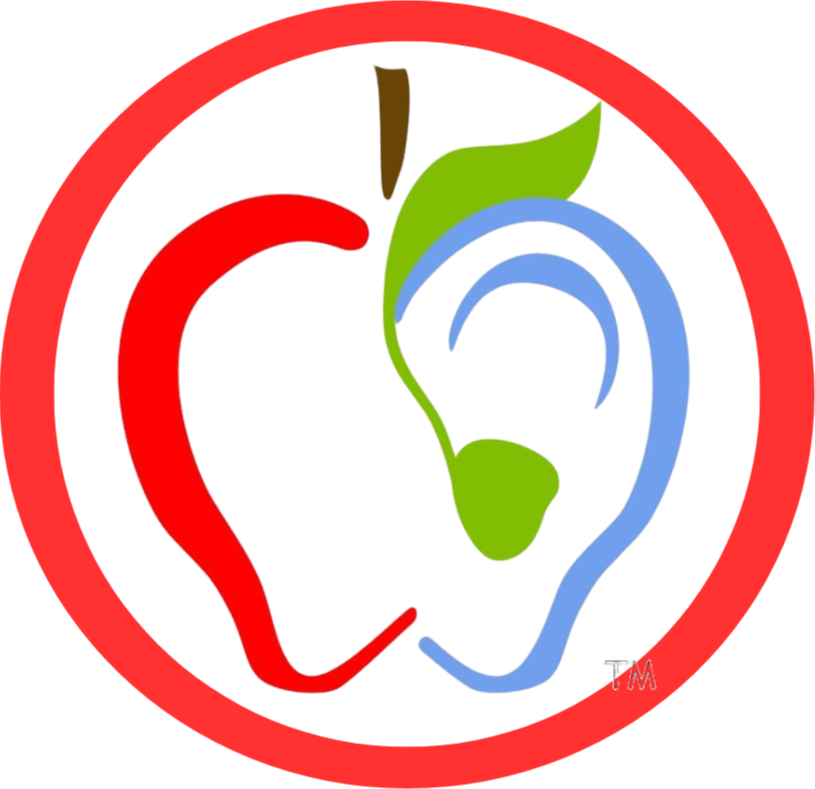Universal Design for Learning with Big Impact for Your DHH Students
Aug 23, 2023
“When the teacher’s voice is heard, students learn. When students can hear clearly, they are more likely to participate in classroom discussion, to think critically about a topic and to gain comprehension.” - WeAreTeachers

With the beginning of the school year upon us, I can guarantee you thee is a lot of concern from general education teachers on how to meet the needs of their mainstreamed students who are deaf or hard of hearing.
Below we will share various tips and strategies to improve communication and accessibility to learning within the classroom.
Universal Design Tip #1: Utilize a Classroom Sound System
What is it? A classroom sound system is a system that amplifies the teacher’s voice through a small microphone and strategically placed speakers throughout the classroom. The teacher’s voice will be amplified enough that it will compensate for any background noise surrounding the classroom. Although it is a specialized system, every student benefits from it. Including your student with hearing loss.
Besides amplifying the teacher’s voice, what other benefits does it have? It gives the teacher the freedom to roam around the classroom and fully engage every student. If a teacher is walking around the classroom without this amplification system, you run the risk that a deaf or hard of hearing student will not be able to hear the teacher as they move further away from that student. With a classroom sound system, a deaf or hard of hearing student would be able to hear the teacher regardless of where they are located in the classroom. Additionally, it helps build phonemic awareness for all students. By developing this skill, students will be able to more easily identify and manipulate individual sounds, such as parts of words or syllables, and match them with the spoken word.
Other benefits of Classroom Sound System:
- Less vocal strain on teachers
- Teachers spend less time repeating themselves
- Improved student behavior
- Helps students with dyslexia and auditory processing be able to hear words
Universal Design Tip #2: Provide Written School Announcements
Students have different learning styles regardless of their level of hearing. Some students may learn better through verbal communication, others through written communication. As a teacher, it is extremely beneficial to be able to recognize and identify the various learning styles that a classroom may have. This way more students can benefit.
Why are written school announcements beneficial? First and foremost, it is an available form of communication for students and staff when noisy environments are present. Instead of the student trying to decipher the important information from the teacher, they can follow along and have the important information in front of them. Not only does it benefit the students present in the classroom, but it allows the students who were absent to have access to this information when they return to the classroom. It allows for ease of access across multiple electronic platforms, such as email, website, social media, etc.
Universal Design Tip #3: Find a Random Student Generator Tool
Why do we need this?
It removes any teacher and student bias for group and partner activities. Especially for larger group instruction, it drives engagement through potential accountability. If a teacher uses a random student generator tool to call on students for answers, it allows for equal opportunity for student engagement. Even though this may seem intimidating, it will foster an environment that accepts incorrect or incomplete answers. It’s okay if students get it wrong. It allows for the possibility and freedom to learn from those wrong answers.

Using a random student generator tool for group and partner work creates an environment of inclusivity, where everybody gets to work with each other. Students don’t need to worry about being left out. They can build relationships with their peers and learn how to interact with other children and find commonalities with them. It also offers language opportunities to students with lower language levels. Students learn to work with others who have different learning styles, communication approaches, and/or socioeconomic status. Working and speaking in smaller groups or with a partner is less intimidating than speaking in front of a whole classroom.
Deaf Ed Tip #4: Student Accountability System
Accountability is a principle strategy in learning for all students. Each student has a buddy who checks to make sure that the other has written assignments done, turned in, and has all materials, such as homework, binder, book, coat, backpack, lunchbox, etc. A student’s buddy can also make sure that each other’s binders, lockers, or cubbies are in order and organized.
Here are some simple strategies to support executive functioning needs:
- Have homework written down in the same spot everyday.
- Schedule a weekly organization time
- Create an end-of-day checklist to remember materials.
- Provide brain breaks during and after instruction.
- Have students set up homework binders.
- Incorporate movement during instruction.
- Give an extra three to five minutes to organize before transitions.
- Create routines and practice them often.
- Use countdowns and time checks during work periods.
- Explicitly teach executive functioning and study skills.
Deaf Ed Tip #5: Spoken Spelling Test Alternative
Just because a child can memorize words for a test does not mean they understand the logic or reasoning behind the spelling of words.

How do teachers provide an alternative to a spoken spelling test to a student who is deaf or hard of hearing? Use pictures and/or dictation sentences provided ahead of time. Use dashes with similar length as the words. Provide various words with both the incorrect and correct spelling so that the student can choose which one is the correct spelling of the word. Another option is to have a paragraph and then have the student find the misspelled words within the paragraph. They not only learn how to spell, but they can see how words are used with proper grammar.
There are a variety of ways for spelling tests to be conducted without using spoken words. Having these options available allows for not only students who are hard of hearing to obtain the same education, but also for other students who have different learning styles.
Deaf Ed Tip #6: Closed Captioning
All students are unique in their learning styles. Some are auditory learners, others are visual learners, etc. With the use of closed captioning captions, students are allowed to visually see what is being said.
Captions create a rich learning environment. Students are able to hear, see and experience the meaning of words. It provides a multi-sensory approach to learning. Younger students can dramatically improve vocabulary and fluency just from exposure alone. They are able to see how words are spelled and used in proper sentences to give them real-world applications. This is particularly beneficial when trying to learn another language. People will learn another language quicker when exposed to television with captions (i.e., EL students).
Adding captions to an auditory-only experience more than doubles retention and comprehension rates. Students are more engaged and responsive because they’re not only listening, but they’re watching and reading. They can match the sounds of the word to the format of the word. A majority of high frequency words are found in captions, so they will be able to experience examples of words they use in everyday conversations.
Deaf Ed Tip #7: Movie Notes Alternatives
Students want to be engaged while they are learning and teaching key concepts while adding in a movie or any type of video can pique some interest. However, it is important to make sure students stay engaged and comprehend what you are trying to teach. Movies as a teaching method can be beneficial if used in the right way. Before a teacher decides that they want to show a movie for class, they should ask, “What’s the purpose? Is it to teach or is it to supplement teaching?” It can potentially disconnect students from participating, so how can teachers make it more engaging for students to pay attention and learn from it?
Here are some alternatives to movie notes:
- Students can write down any facts they learned or questions they have about the movie after viewing.
- Ask students to demonstrate a concept for the class, using any medium (drama, art, writing, games, Scratch, etc.).
- Create and share a memorization trick (acronym, visual cue, gesture) to remember facts shown.
- Have a quiz immediately after watching the movie so the information is fresh in their brains.
Deaf Ed Tip #8: Speech-to-Text
Did you know that students who struggle with reading and writing could benefit from speech-to-text technology? It’s true! You can use these tools with students who have learning delays, such as those on the autism spectrum, those with dyslexia, or those with impairments affecting fine motor skills. The length of time it takes to write may negatively impact the student’s intended message. Kids with motor issues can write without using a keyboard. They are able to write their complete thoughts, especially if they think faster than their hands can write.
Deaf Ed Tip #9: Strategic and Flexible Seating
Students can achieve higher learning outcomes when they are able to make choices about how they spend their day. Did you know student performance increases by 15% when the classroom employs a more strategic and flexible seating arrangement. Students who are provided with meaningful choices are more intrinsically motivated, take more responsibility for their own learning, and learn better. So why not start with flexible seating?

- Choice - Students have a sense of control over their environment. Choice in where, how and with whom they work builds higher-order thinking skills.
- Physical Health - Movement increases oxygen to the brain, builds core strength, burns calories, increases metabolism. Students are more alert and focused. Space out the seating in the classroom so there is room to move.
- Make seating inclusive - It should support all learners rather than singling any student out.
- Self Awareness - How does each student learn best? They can figure out what works best for them and make adjustments to their seating positions to gain the best possible education. This allows them to make the choices for themselves.
- Self Reflection - Students can identify barriers to learning and communication and self-adjust. This builds independence and creates proactive rather than reactive learners.
- Comfort - When students are comfortable, they are more alert and productive. They are also more willing to learn and will enjoy learning more.
- Building a Sense of Community - Traditional desks encourage possessive behavior over space and supplies. Flexible seating fosters turn-taking and sharing. Students can easily pair up and work in groups without moving desks. Encourages teachers to think of collaborative tasks.
- Learning Commitment - Teacher control is less. Student control is more, which means improved student engagement. Students start owning their environment.
- Communication - It opens a line of communication among students and between teacher and student. More choices have to be made, therefore there is more open communication. This builds problem-solving skills and conflict resolution.
- Sensory Input - Processing information becomes easier and students will be less disruptive and “out of their seats” when they are able to use excess energy.
- Mindset Shift - Flexible seating allows for a change of teaching philosophy and structure. Teachers have a better idea of student performance.
- Fun - The classroom is more fun! Simple as that!
Deaf Ed Tip #10: Ditch the Clips!
One of the harder concepts to grasp is how to discipline a student. Teachers should TEACH students, not SHAME them. If disciplinary action is necessary in the classroom, do it in private. The last thing a student wants or needs is to have the other kids in class point out their flaws. That is not the way to help kids take ownership of their mistakes.
Create an environment where it’s okay to make mistakes as long as they can learn from them. Teach kids how to manage themselves. Don’t showcase shortcomings or deficits. What if these were regarding IQ, grades or academic levels? This can ultimately create a social divide and undo everything that has been previously mentioned. It would foster the idea that kids who follow the accepted norm are superior and the kids who don't are inferior. Let’s ditch that idea right now!
We want kids to be self-sustaining, engaged, and most importantly, happy!
Deaf Ed Tip #11: “I Need” Box
 Many students don’t feel like they have an adult they can trust with their concerns. Students don’t want to appear as if they are tattling. Every student is able to put a card in the box daily noting any “needs” no matter how big or small, whether it’s supplies, seat changes, or bullying situations. This creates a safe space for students to speak up when they need something. Eventually, students will come to the teacher directly after they have developed that rapport and trust.
Many students don’t feel like they have an adult they can trust with their concerns. Students don’t want to appear as if they are tattling. Every student is able to put a card in the box daily noting any “needs” no matter how big or small, whether it’s supplies, seat changes, or bullying situations. This creates a safe space for students to speak up when they need something. Eventually, students will come to the teacher directly after they have developed that rapport and trust.
Deaf Ed Tip #12: Celebrate Uniqueness
This doesn’t need much explanation. Celebrate students and what makes them unique. Students who feel accepted and celebrated in their classroom will be more engaged and willing to learn!
Universal Design for Learning (UDL) refers to practices designed to help people learn in the way that is most effective for them, making education accessible for all. Everyone has different learning styles, and while some strategies may not work well for everyone, UDL strategies can be great for deaf or hard of hearing students. Whether it’s for an educator, student, or parent of a deaf or hard of hearing child, these strategies can benefit everyone.
Check back to see more from The Online Itinerant!
Sources
Kiefer, S. “Beyond DHH: UDL Strategies to Make the Classroom Accessible for All.” https://bit.ly/BeyondDHH
Classroom Audio Distribution Systems (CADS). https://wyominginstructionalnetwork.com/outreach-services/outreach-services-for-deafhard-of-hearing/classroom-technology/classroom-audio-distribution-systems-cads/

